Most anglers are familiar with typical red worms and nightcrawlers used in fishing…
But did you know there are more than 8 different types of fishing worms, and each worm has distinct advantages and applications?
In this guide, were going to get our hands dirty (see what I did there) and cover everything you need to know about using real worms to catch fish!
This page contains affiliate links. As an Amazon Associate, I earn from qualifying purchases.
Table of Contents
What Are The Different Types of Fishing Worms?
Some of the most popular types of worms that are regularly used for fishing are nightcrawlers, wax worms, leeches, mealworms, blood worms, spikes, red wigglers, and butter worms.
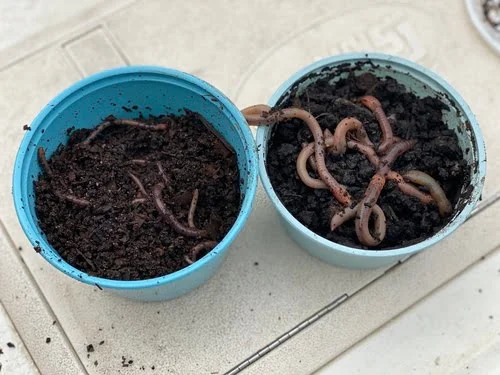
Each type of worm has different advantages and disadvantages, as well as best use scenarios.
For example, some worms are ideal for ice fishing, while others are so versatile they can catch fish all over the country, any time of year…
Some worms are common and easy to raise at home, others can be harder to find in the winter months and may not work in certain warm weather environments.
Let’s take a closer look at each type of worm below!
Nightcrawlers
Nightcrawlers are the go-to bait for most fish species. These worms work great because they are big, durable, and versatile. The average size of a nightcrawler is 5 to 8 inches, but 8 to 10 inch worms are not uncommon.
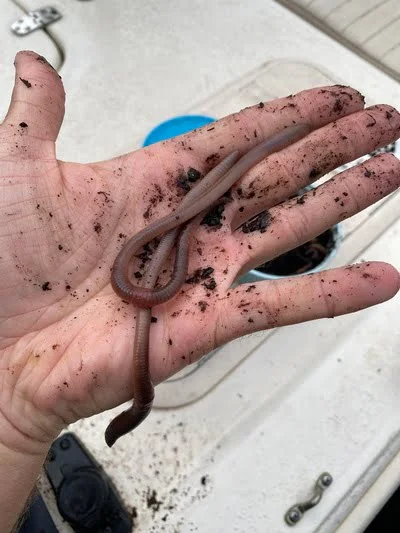
Their large size can catch larger fish species like largemouth bass and catfish, but you can also cut them into smaller pieces when targeting smaller fish such as trout, perch, or sunfish.
Nightcrawlers are the most common and widely used type of fishing worm, with only the red wiggler coming in a close second.
Red Wigglers
The next type of worm that most anglers will be familiar with is red wigglers.
Although smaller than nightcrawlers, they get their name for their incredible movement and squirming in the water.
In fact, red wigglers squirm and wiggle so much they can be difficult to hook!

The bright red color and smaller size of red wigglers make them a great choice for fish species such as trout, bluegill, shellcracker, creek chubs, warmouth and even freshwater drum!
Red wigglers are smaller than even a medium-sized nightcrawler, so they are ideal for any smaller fish in your area.
Mealworms
Mealworms are next on the list, and these are very popular bait for small species as well like trout, bluegill, yellow perch, longear sunfish, redbreast and crappie.
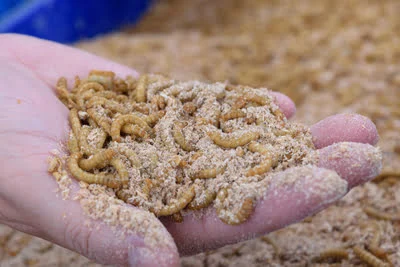
Mealworms are the larvae of beetles and have a strong odor. This smell is irresistible to fish, making them a great bait option.
Because mealworms are also used as a food source for pets such as reptiles, fish, and birds, they are usually easy to find at various feed and pet supplies stores or easy to order online.
Waxworms
Waxworms are very similar to mealworms and aren’t technically worms. They are the larvae of a type of moth.

Waxworms are mostly used during ice fishing season, and they do very well in the colder months.
Waxworms, like mealworms and red wigglers, are best for smaller bait hooks and fish.
That doesn’t mean you can’t catch larger species with them, but they are a favorite for crappie, walleye, perch, and bluegill through the ice.
Leeches
Leeches are an unusual bait that excels at catching fish that are not wanting to eat a traditional worm. Leeches work best to catch walleye, smallmouth bass, and largemouth bass.
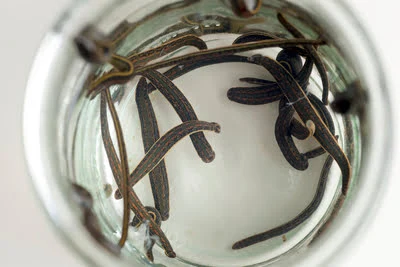
They are much easier to keep alive than most types of worms but work best during the warm summer months.
Just be sure to use caution and keep your fingers and hands away from their mouths!
And if you’re not keen on handling live leeches, you can purchase Gulp artificial leeches that don’t bite back, ha!
Blood Worms
Blood worms are similar to leeches and must be handled with caution, as they can bite you (don’t worry it doesn’t hurt too bad, ha!).
It is worth the risk of using them, however, as they are easily one of the best types of worms to fish with regardless of the fish species that you are chasing.
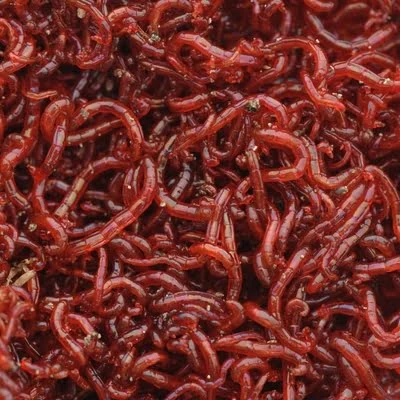
Blood worms get their name from their bright red color. They are the larvae of a type of fly and are extremely carnivorous.
They also come in many different sizes depending on age, so they can be effectively used for bass, catfish, carp, panfish, perch, and many more.
Gulp artificial bloodworms are another option if you prefer it when your bait doesnt bite back!
Butter Worms
Butter worms are another type of larvae similar to wax worms or mealworms. They are the larvae of Chilean moths and are bright yellow in color.

Smaller fish such as trout, bluegill, crappie, perch, and rock bass all love and will devour a butter worm on the end of your hook.
Butter worms work well at shallow to medium depths. They last much longer in cooler water temperatures and can be a little harder to find at bait shops than other types of worms.
Spikes
Spikes (although technically not a worm) are what most people would call maggots.
Smaller in size, they work best in cooler temperatures and can be effective at catching fish with small mouths like perch, carp, bluegill, smallmouth bass, and smaller catfish.

Maggot spikes are a popular choice for ice fishing and are usually around half an inch in length.
They are white in color, appealing to many species of fish, and work great when tipped on a small jighead.
Why Do Worms Work So Well for Fishing?
Fish are predatory creatures and have a wide range of food sources that they rely on. Although many fish will prey on crustaceans, insects, and smaller fish, almost all of them will eat worms when given the chance.
The reason that worms work so well as fishing bait is because they have all the qualities fish desire: A strong scent, a subtle wiggling action, and of course an easy target.
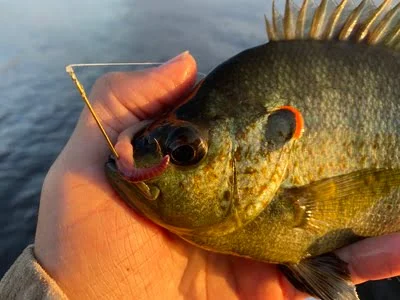
Worms will give your bait presentation a natural look. Many types of worms will also be very active and fish will love the wiggling action in the water.
Combining both the scent and this motion underwater, worms are easily one of the most versatile and simple bait choices.
What Are the Best Worms for Fishing?
Almost all worms make great bait for fishing. Nightcrawlers are often considered to be the best option for most fishing situations, the best worms will largely depend on the type of fishing that you are doing and the fish species that you are pursuing.
For larger species of fish like bass and trout, larger worms such as nightcrawlers and blood worms are excellent choices. For smaller species of fish like bluegill and yellow perch, smaller worms like red wigglers and mealworms are a better option.
Some species, such as red wigglers and blood worms, also last longer in the water.
This could factor into your decision of what type of worm to use, as something like ice fishing may require your worm to wait longer for a bite.
How to Fish with Real Worms
No matter what type of worm you are using, fishing with real worms involves a similar process.
The key is to keep the worm alive long enough on your hook to attract nearby fish and entice them to bite.
A live bait hook is one of the best types of hooks to use with worms, but Aberdeen or octopus hooks also work excellent. Ideal sizes from #4 to #8 should cover just about any type of fish and any type of worm that you are using.
To attach your worm to your hook, thread it along the shank of the hook. You should pierce the worm at least two or three times to ensure it does not come off too easily. Leave a section of the worm dangling off at the end to encourage wigging to attract fish.
The best part about using real worms as bait is that you do not need to add any presentation to your setup. The wiggling action of the worm and the natural scent it puts off will be enough to attract fish in the area.
Two of the best ways to use real worms are with a split shot rig and under a bobber. A split shot rig is great for deeper water or when the fish are along the bottoms.
To make a split shot rig, simply tie on your bait holder hook, thread on a worm, and then place a small split shot weight onto the line around 8 to 12 inches above it. For live worms, BB sized weights tend to work really well.
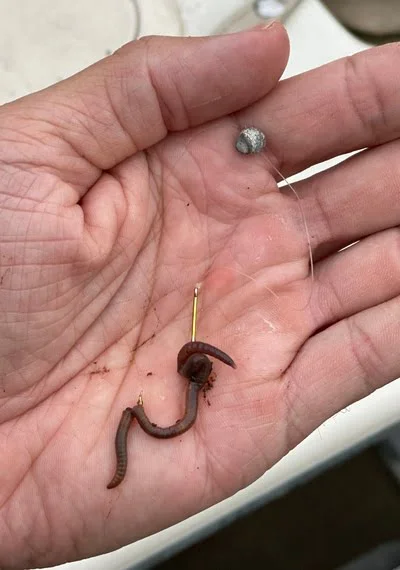
You can play around with the weight size and distance depending on the fish you are pursuing and where they are hiding.
Worms also work extremely well under a bobber. Suspending the worm in the water with a bobber can catch many different types of fish at all kinds of various depths.
With a simple bobber, your hook, a worm, and some added split shot weights, you can create a versatile rig that can catch almost any type of fish.
This is one of my favorite bluegill rigs because it’s just so darn simple!
Fishing with a split shot rig or with a bobber, you can find and catch fish no matter where you might be fishing. Both of these rigs do great from the shore, from a boat, from a pier or dock.
Live Worms vs Plastic Worms
Many anglers are often caught in the middle between using live worms and plastic worms for their fishing. Both of these work great for catching fish, but they are very different from one another.
Live worms offer benefits such as putting off a great scent that attracts fish. They also move and wiggle on their own, providing a very natural presentation.
Most plastic worms do not give off a scent, and they must be fished in certain ways to ensure a realistic presentation.
Plastic worms come in a wide range of different sizes, shapes, and colors to accommodate your fishing style and habitat and are much more durable than live bait.
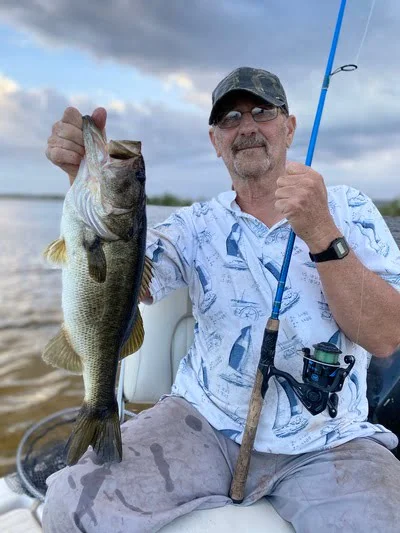
Did you know that plastic worms like the popular Senko are not trying to imitate an actual worm? Most of the time, they are imitating an eel, salamander, or other small aquatic creature!
Both live worms and plastic worms are great for catching fish, but one is not better than the other.
In my experience, live worms are typically used to target panfish, catfish, and other smaller to medium-sized fish.
Whereas plastic worms are typically fished with technique and finesse to trigger reaction bits from largemouth bass, smallmouth bass, northern pike, striped bass and other larger predatory fish.
What Are Scented Worms?
Scented worms are plastic worm lures that are dipped, coated or injected with a scent to attract fish.
From natural earthworm scent to other scents like salt, crab, sardine, shrimp, and even garlic. Some of these scents will not only help to attract fish but they can be used to mask the human scent that is placed on a lure and hook when rigging up.
People who make their own homemade fishing lures in injection mold kits, often add their own ‘secret‘ scent to entice a bite.
There are certain smells that are irresistible to fish, and these worms are made to try and mimic these scents to add more appeal to the lure.
Nightcrawlers Vs Red Worms
Nightcrawlers and red worms (also known as red wigglers) are two of the most popular types of worms to fish with. While very similar, they both have some major differences that can help you make a decision between the two.
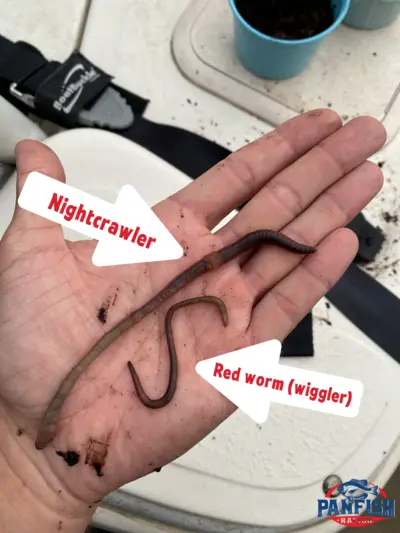
Nightcrawlers are very large worms. They can reach lengths of 8 to 10 inches, although will be 5 to 7 inches on average. This means they work well for larger fish species.
They can also be cut into smaller pieces to be able to catch smaller fish. Because they are bigger, they can be much easier to place onto a hook.
Red worms are much smaller than nightcrawlers. They are usually only 2 to 3 inches in length and are mostly used to catch smaller fish species.
They also live much longer underwater, providing plenty of wiggling to attract fish.
Red worms are a little easier to take care of and keep alive when compared to nightcrawlers, but their smaller size and movement will make them a little more difficult to place on a hook.
Both nightcrawlers and red worms are excellent options for bait. The decision between the two will mostly depend on the size of fish that you want to catch, the availability of the worms, and how easily you can bait a small hook.
Regardless of which type you choose, both nightcrawlers and red worms can catch many of the same species and are usually found in the same bait shops.
Half the fun is experimenting with different baits to find out what works best!
If you haven’t guessed yet, I love fishing and everything about it!
To learn more about why I started Panfish Nation, visit the About page and follow along on Social Media:


Download a copy of my FREE Lure Color Selection Chart & Knot Guide!
Stay up to date with fishing reports, tackle reviews, industry news, and much more! We respect your privacy, unsubscribe at any time.
